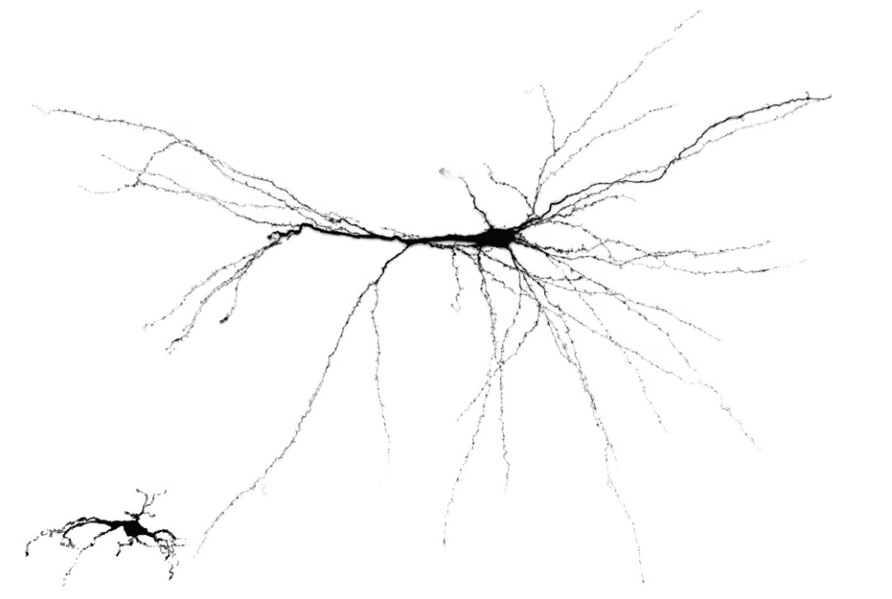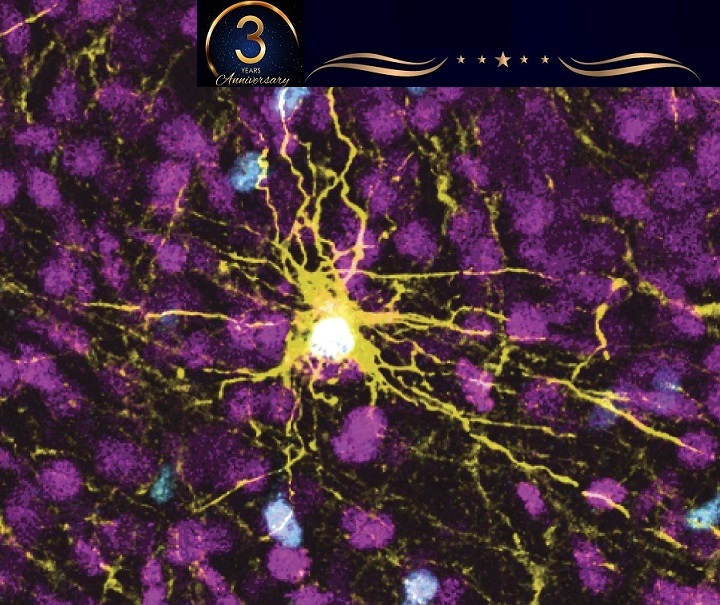Rat–human hybrid brains offer new ways to study human neurological disorders, but also raise ethical questions Excitement and concern arise as sci
Rat–human hybrid brains offer new ways to study human neurological disorders, but also raise ethical questions
Excitement and concern arise as scientists make a study real
Miniature human-brain-like structures transplanted into rats can send signals and respond to environmental cues picked up by the rats’ whiskers, according to a study, reported Nature.
This demonstration that neurons grown from human stem cells can interface with nerve cells in live rodents could lead to a way to test therapies for human brain disorders, report scientists working in the study.

Credit: Stanford University
Scientists would like to use brain organoids -tiny brain-like structures grown from human stem cells- to study neurodegenerative and neuropsychiatric disorders that humans develop. But the organoids mimic human brains only so far. They don’t develop blood vessels and so can’t receive nutrients, meaning that they don’t thrive for long. And they don’t get the stimulation they need to grow fully: in a human infant’s brain, neurons’ growth and how they develop connections with other neurons are based in part on input from the senses, reported Nature.
To give brain organoids this stimulation and support, neuroscientist Sergiu Pasca at Stanford University in California and his colleagues grew the structures from human stem cells and then injected them into the brains of newborn rat pups, with the expectation that the human cells would grow along with the rats’ own cells. The team placed the organoids in a brain region called the somatosensory cortex, which receives signals from the rats’ whiskers and other sensory organs and then passes them along to other brain regions that interpret the signals.

Credit: Timothy Archibald
Human brain cells mature much more slowly than rat cells, so the researchers had to wait for more than six months for the organoids to become fully integrated into the rat brains. But when they examined the animals’ brains at the end of that time, they saw that the integration had been so successful that it was almost like adding “another transistor to a circuit”, Pasca said at a press conference, reported Nature.
“It’s an important step in allowing organoids to tell us more complex properties of the brain,” says Paola Arlotta, a molecular biologist at Harvard University in Cambridge, Massachusetts. Although she thinks that the transplantation procedure is probably still too expensive and complex to become a standard research tool. The next step, Arlotta adds, will be to work out how individual human neurons -not just fully developed organoids- are integrated into the rat brain.
In their report, published in Nature, the researchers describe how they genetically engineered the neurons in the organoids to fire when stimulated with light from a fibre-optic cable embedded in the rats’ brains. The team trained the rats to lick a spout to receive water while the light was switched on. Afterwards, when the researchers shone the light on the hybrid brains, the rats were prompted to lick the spout, meaning that the human cells had become integrated well enough to help drive the animals’ behaviour. Furthermore, when the researchers prodded the rats’ whiskers, they found that the human cells in the sensory cortex fired in response, suggesting that the cells were able to pick up sensory information, reported Nature.

Credit: Stanford University
Pasca and his colleagues also created brain organoids from the stem cells of three people with a genetic condition called Timothy syndrome, which can cause symptoms similar to some seen in autism. The tiny structures looked the same as any other brain organoids grown in a dish, but when the researchers transplanted them into rats, they did not grow as large as others and their neurons didn’t fire in the same way.
Rusty Gage, a neuroscientist at the Salk Institute for Biological Studies in La Jolla, California, is glad to see these results. In 2018, he and a team of researchers found that transplanted human brain organoids could be integrated into the brains of adult mice. Mice don’t live as long as rats, and Pasca and his colleagues hoped that because newborn rat pups’ brains are more plastic than those of adult animals, they would be better able to receive the new cells, reported Nature.

Some of the challenges are ethical. People are concerned that creating rodent–human hybrids could harm the animals, or create animals with human-like brains. Last year, a panel organized by the US National Academies of Sciences, Engineering, and Medicine released a report concluding that human brain organoids are still too primitive to become conscious, attain human-like intelligence or acquire other abilities that might require legal regulation.
Pasca says that his team’s organoid transplants didn’t cause problems such as seizures or memory deficits in the rats, and didn’t seem to change the animals’ behaviour significantly, reported Nature.
Brain organoids and human–animal hybrid brains could reveal the mechanisms underlying these illnesses, and allow researchers to test therapies for conditions such as schizophrenia and bipolar disorder. “I think we have a responsibility as a society to do everything we can,” Arlotta says as reported by Nature.
All Credit to: Nature


